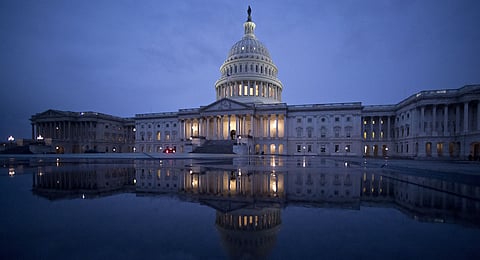Two Americas go to war in US mid-terms – The Wall Street Journal
EDINBURGH — Far more people than usual are paying attention to the minutiae of US politics in these US mid-terms, including trying to fathom the complex way voting boundaries are drawn and redrawn. This is undoubtedly because the world's largest economy is being run by a reality TV star, who has created a highly captivating daily soap opera. Entertainment aside, Trump's many controversial decisions, which have ranged from doing his bit to bring about peace between the two Koreas to sparking a US trade war with China and saying nasty things about Africa, have reminded us that the US exerts an influence on us all. The mid-terms this year hold the ingredients for heightening the political drama in the US. Power could be split as two Americas cast their votes. – Jackie Cameron
By Janet Hook and Reid J. Epstein
___STEADY_PAYWALL___

